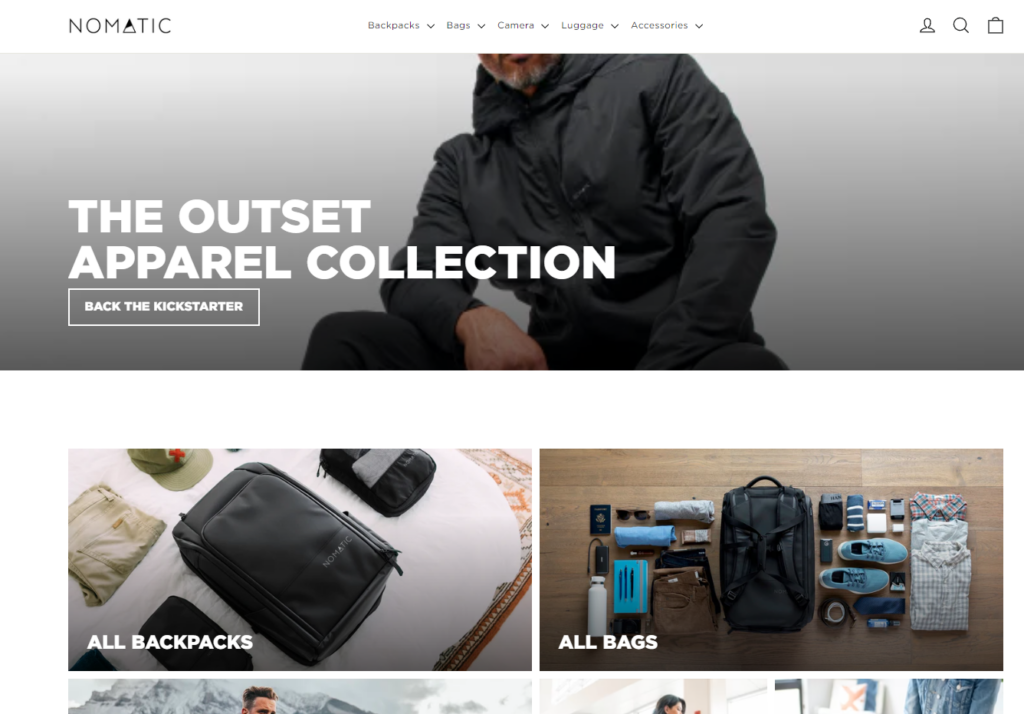Why Defining Your Business is Essential to Discovering Your Niche
Narrowing your specialty and clearly identifying your target market are crucial to success in today’s competitive business environment. “The riches are in the niches,” as they say, and rightly so. By targeting a niche, you may reach your ideal consumers and develop your company.
Why is targeting your market important? Define your target market to focus your message and marketing. Customization boosts conversions, ROI, and brand awareness. Understanding your target market helps you uncover pain spots, meet client demands, and create goods and services that really connect.
This step-by-step strategy will help you define your niche and target market. These proven tactics and insightful data help unleash your business’s full potential. So prepare to learn specialty targeting tactics, professional advice, and real-world examples to increase your company success.
Join us as we define your target market and generate amazing company development. Let’s start growing your company.
Understanding Your Business to Define Your Niche and Target Market

Understand your company to determine your specialty and target market. This deep understanding guides you to the best niche for your products. You may determine your niche by analyzing your unique value proposition, core strengths, and competitive advantage.
Start by identifying your products’ advantages. Find out how they solve consumer problems. To understand your target market, evaluate your current customers’ trends, preferences, and demographics.
Next, research market trends, industry reports, and consumer feedback. Keyword research tools and search trend analysis may assist find terms and phrases your target audience likes. Using these keywords organically and optimizing your website will boost your online presence and generate quality leads.
Studying your rivals’ techniques and specialty targeting methods may help you stand out. Analyze their audience, message, and positioning to find gaps and possibilities.
You may definitely establish your niche and target market using business knowledge and these step-by-step tactics. This insight helps you adapt marketing, create appealing message, and grow your company.
Remember, integrating these tactics and always improving your knowledge of your company and target market will keep you connected with the changing demands of your audience and competitive in your area.
How Does Defining Your Business will Help You Find Your Niche
Define your company to determine your niche:
- Clarity of mission: Defining your firm clarifies its mission, values, and distinctive offers. This clarity lets you discover the market niche that matches your business’s capabilities and beliefs. By focusing, you may establish a niche that fits your business and stand out from the competition.
- Target Audience: Defining your company requires identifying your target audience. You research demographics, preferences, and requirements. This helps you find a niche market with similar needs and wants. You may establish a loyal client base by tailoring solutions and marketing methods to this particular group.
- Competitive Advantage: Defining your company helps you distinguish yourself. You may identify your competitive advantages by knowing your unique value offer. This knowledge helps you find your specialty by filling a market need that other companies may not address. Your specialized market advantage is uniqueness.
- Market Research and Analysis: Define your company via market research. This study reveals market trends, gaps, and opportunities. Market analysis might reveal unexplored niche markets. This allows you to customize your goods, services, and marketing to these specialty sectors.
- Brand Positioning: Define your company to place your brand in your particular market strategically. Your brand identity may reflect your audience’s beliefs and interests. You may develop trust and confidence in your area by explicitly identifying your company and specialization.
Define your company to identify your specialty. It clarifies goals, identifies target audiences, leverages competitive advantage, aids market research and analysis, and promotes strategic brand positioning. Understanding your company and its value allows you to confidently target a niche market, enhancing your chances of success and creating a firm footing in your selected market segment.
Defining Your Business: Uncovering Your Unique Value and Target Market through Market Research
Defining your business involves a process of uncovering key insights through market research. By conducting thorough analysis and research, you can gain a deep understanding of your business’s unique value proposition and identify your target market.
Firstly, market research enables you to assess the current landscape and competition. By examining industry trends and competitors’ strategies, you can identify gaps and opportunities for your business.
Furthermore, conducting customer surveys and interviews helps gather valuable feedback and insights. These interactions provide firsthand information about customer preferences, pain points, and unmet needs.
In addition, analyzing demographic data helps identify your target market’s characteristics, such as age, location, and interests. This information allows you to tailor your marketing messages and offerings effectively.
Moreover, studying psychographic factors, such as values, lifestyle, and behaviors, uncovers deeper motivations that drive customer decisions. Understanding these psychographic aspects helps refine your brand positioning.
Additionally, conducting competitor analysis helps you differentiate your business. By understanding competitors’ strengths and weaknesses, you can identify the unique value that sets your business apart.
By utilizing various research methods, such as online surveys, focus groups, and data analysis, you can gather comprehensive insights to define your business accurately.
How To You Define a Business?
Define a business’s mission, distinctive traits, target audience, and value proposition. Define a business step-by-step:
Start with your business’s goal and vision. The mission statement describes your company’s purpose and principles, while the vision statement describes its long-term ambitions.
Find your business’s USP. Determine what makes your goods or services unique and why buyers should select you. Highlight your benefits.
Target Market: Choose the clients most likely to be interested in and profit from your products. Consider demographics, psychographics, and other important variables.
Market Analysis: Research industry trends, competitors, and customer wants. Assess market size, growth potential, and business-related gaps or undiscovered possibilities.
Brand Identity: Establish your company name, logo, colors, and visual expression. Make sure your brand aspects match your business’s values and your target audience.
Goods or Services: Explain what you sell. Describe their features, advantages, and how they address consumer demands. Emphasize your products’ distinctive features.
Customer Value: Determine your customer value. Determine how your goods or services enhance lives, save time or money, or address particular pain spots. Communicate this value.
Analyze your rivals’ strengths, weaknesses, and market positioning. Find ways to stand out and provide more to your customers.
Brand Messaging: Create engaging and consistent brand messaging that conveys your business’s value proposition to your target market. Create compelling messaging that set you apart.
evaluate and improve: As your market, customers, and opportunities change, evaluate and improve your company description. Stay flexible and competitive.
These methods will help you define your firm in a way that supports strategic decision-making, marketing, and long-term success.
Let’s Get Further into Defining a Business with These Set of Questions
To better define your business, target market, and competitive landscape, consider reflecting on and answering the following set of questions:
- What problem or need does your business solve for customers?
- What unique value or proposition does your business offer?
- Who are your target customers or ideal audience?
- What demographics (age, gender, location, income) do your target customers belong to?
- What are the psychographic characteristics of your target customers (interests, values, lifestyles)?
- What are the key benefits or features of your products or services?
- Who are your main competitors in the market?
- What sets your business apart from your competitors?
- What are the current trends or challenges in your industry?
- What is your business’s mission or purpose?
- What are your short-term and long-term business goals?
- How do you plan to reach and acquire customers?
- What channels or platforms will you use for marketing and promotion?
- What resources or partnerships do you need to support your business?
- How will you measure the success and performance of your business?
By carefully considering and answering these questions, you will gain a clearer understanding of your business, target market, and competitive landscape. This information will be instrumental in defining your niche and developing effective strategies. Take the time to reflect and answer these questions thoughtfully to establish a strong foundation for your business definition.
The Efficiency of Defining a Business
In the vast and ever-evolving business landscape, some companies have excelled in identifying and capitalizing on their unique strengths to carve out niche markets. By leveraging their advantages, these companies have successfully positioned themselves in specialized segments, gaining a competitive edge and attracting a loyal customer base. In addition, through thoughtful analysis and understanding of their core competencies, these businesses have buffed in on market gaps and tailored their offerings to meet specific customer needs. Therefore, by doing so, they have not only thrived in their chosen niches but also paved the way for others seeking to make their mark in a crowded marketplace. Check this examples to get an idea.
Here are a few examples of companies that have effectively defined their business and found success in their respective niches:
-
Dollar Shave Club: Dollar Shave Club identified a gap in the market for affordable, high-quality shaving products delivered directly to consumers. By offering a subscription service for razors and other grooming products, they disrupted the traditional razor industry and gained a significant following.
-
Lululemon Athletica: Lululemon specializes in athletic apparel and yoga accessories. They have positioned themselves as a premium brand with a focus on quality and performance. By catering to the growing demand for stylish activewear, they have built a loyal customer base and become a leader in the athletic apparel industry.
-
Airbnb: Airbnb recognized the untapped potential in the vacation rental market. By connecting travelers with homeowners looking to rent out their properties, they created a platform that offers unique accommodations and personalized experiences. This approach disrupted the hotel industry and provided an alternative for travelers seeking more authentic and affordable stays.
-
Tesla: Tesla revolutionized the automotive industry by focusing on electric vehicles (EVs) and sustainable transportation. Their commitment to cutting-edge technology, high-performance EVs, and a sleek design attracted environmentally conscious consumers and set them apart from traditional car manufacturers.
-
Warby Parker: Warby Parker disrupted the eyewear industry by offering affordable, stylish prescription glasses and sunglasses online. They introduced a direct-to-consumer model, eliminating the middlemen and reducing costs. Through their “try-at-home” program and social mission of providing eyewear to those in need, they differentiated themselves from traditional eyewear retailers.
These examples demonstrate how businesses that define their niche, understand their unique strengths, and cater to specific customer needs can achieve remarkable success. By leveraging their advantages and differentiating themselves from competitors, they have created strong brand identities and gained a competitive edge in their respective markets.
Lefty’s (niche market: left-handed people)

The percentage of left-handed people in the world is about 9.5%. As a result, Lefty’s in San Francisco opted to sell goods exclusively for this frequently ignored market.
Targeting individuals via search engines and the internet is one of Lefty’s main techniques. As a result, an advertisement from Lefty’s is likely to appear when someone searches for “left-handed pens,” for example.
Nomatic (niche market: travelers)

For individuals who must bring their job with them, Nomatic offers luggage and backpacks that are tailored to this market. Nomatic is the ideal solution for you no matter what kind of work you do, whether you’re a freelancer or digital nomad.
Jacamo (niche market: larger men)

They mostly went after taller, heavier males who have trouble finding well-fitting clothing on the high street. It’s difficult to break into the massive clothes market with a generic product (or message).
To make yourself stand out, you need something. Jacamo made the decision to approach the huge male, who may be the most underappreciated fashion-conscious individual of all.
Conclusion
Defining your business is crucial in navigating the complex and competitive business landscape. You can carve out a niche that sets you apart from competitors by carefully analyzing your strengths, understanding customer needs, and identifying market gaps. This process allows you to tailor your offerings, messaging, and strategies to resonate with your target audience, leading to increased customer loyalty, higher conversion rates, and long-term business success. Defining your business provides clarity, focus, and a competitive edge, enabling you to thrive and make a lasting impact in your chosen market.


